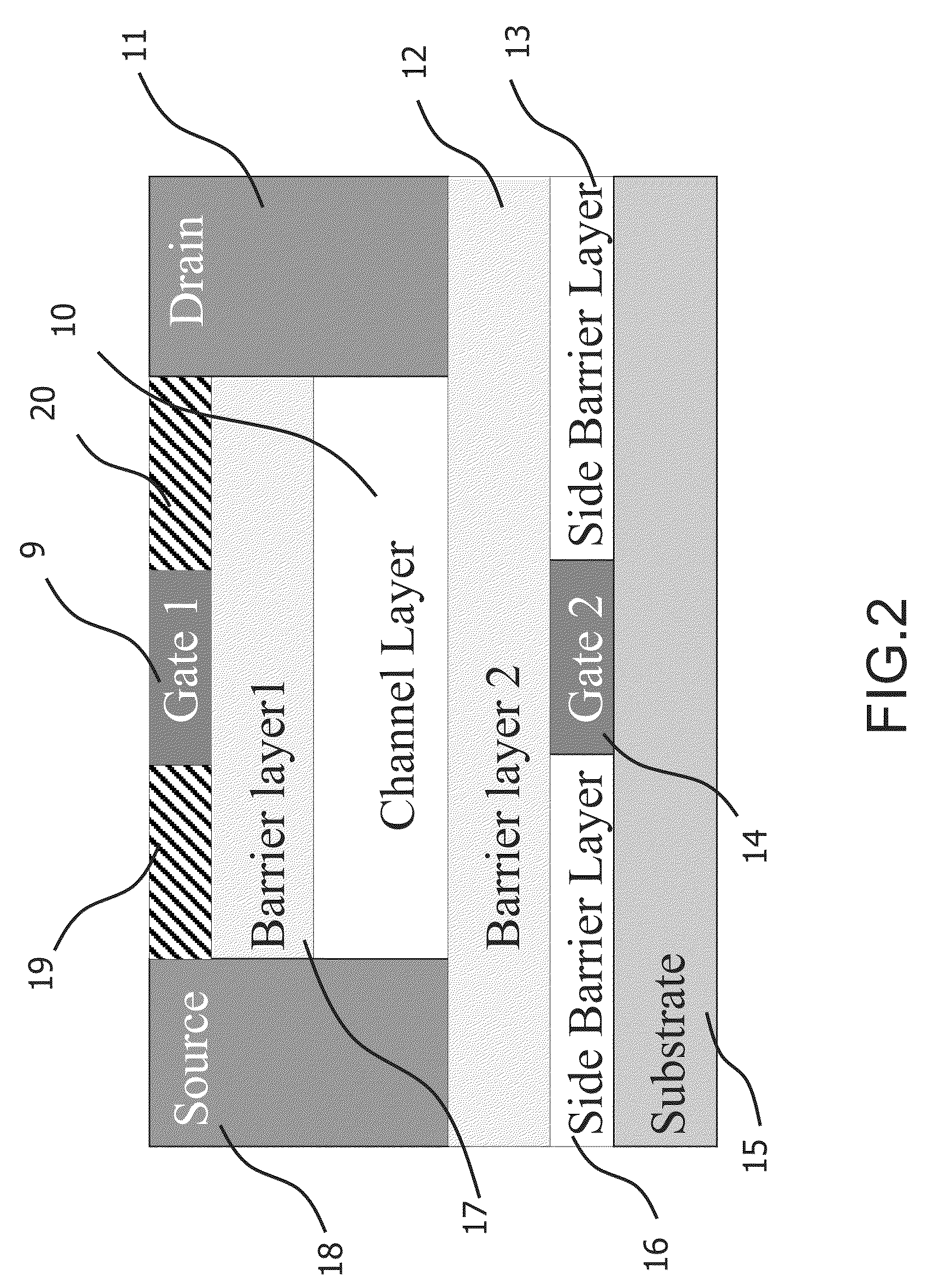High performance multigate transistor
a multi-gate transistor, high-performance technology, applied in the direction of semiconductor devices, transistors, electrical devices, etc., can solve the problems of affecting the performance of the device, and reducing the specificity of the device, so as to reduce the parasitic capacitance associated, the device is more sensitive to the transport properties, and the device is more sensitive to the effect of resistan
- Summary
- Abstract
- Description
- Claims
- Application Information
AI Technical Summary
Benefits of technology
Problems solved by technology
Method used
Image
Examples
Embodiment Construction
A FIG. 2
[0076]FIG. 2 is showing a Double Gate HFET (DGHFET) device according to the preferred embodiment of the invention. The metallic or n+-type semiconductor regions 11 and 18 define the drain and the source of the transistor. Regions 17 and 12 corresponds to the two barrier layers of the device, and the channel layer 10 is the region where the electron (or hole)-channels are formed. Region 9, which can be formed using semiconductor materials or metal, corresponds to the first gate of the device, whereas the semiconductor region 14 corresponds to the second gate. As it can be seen, differently from the conventional structure of FIG. 1, where only one electron (or hole)-channel can be identified, in this embodiment a second conductive channel and a second modulation gate have been added to the structure.
[0077]If the desired device is an n-channel HFET, the channel region should have an electron affinity greater with respect to the two barrier layers 17 and 12, in order to confine ...
PUM
 Login to View More
Login to View More Abstract
Description
Claims
Application Information
 Login to View More
Login to View More - R&D
- Intellectual Property
- Life Sciences
- Materials
- Tech Scout
- Unparalleled Data Quality
- Higher Quality Content
- 60% Fewer Hallucinations
Browse by: Latest US Patents, China's latest patents, Technical Efficacy Thesaurus, Application Domain, Technology Topic, Popular Technical Reports.
© 2025 PatSnap. All rights reserved.Legal|Privacy policy|Modern Slavery Act Transparency Statement|Sitemap|About US| Contact US: help@patsnap.com



